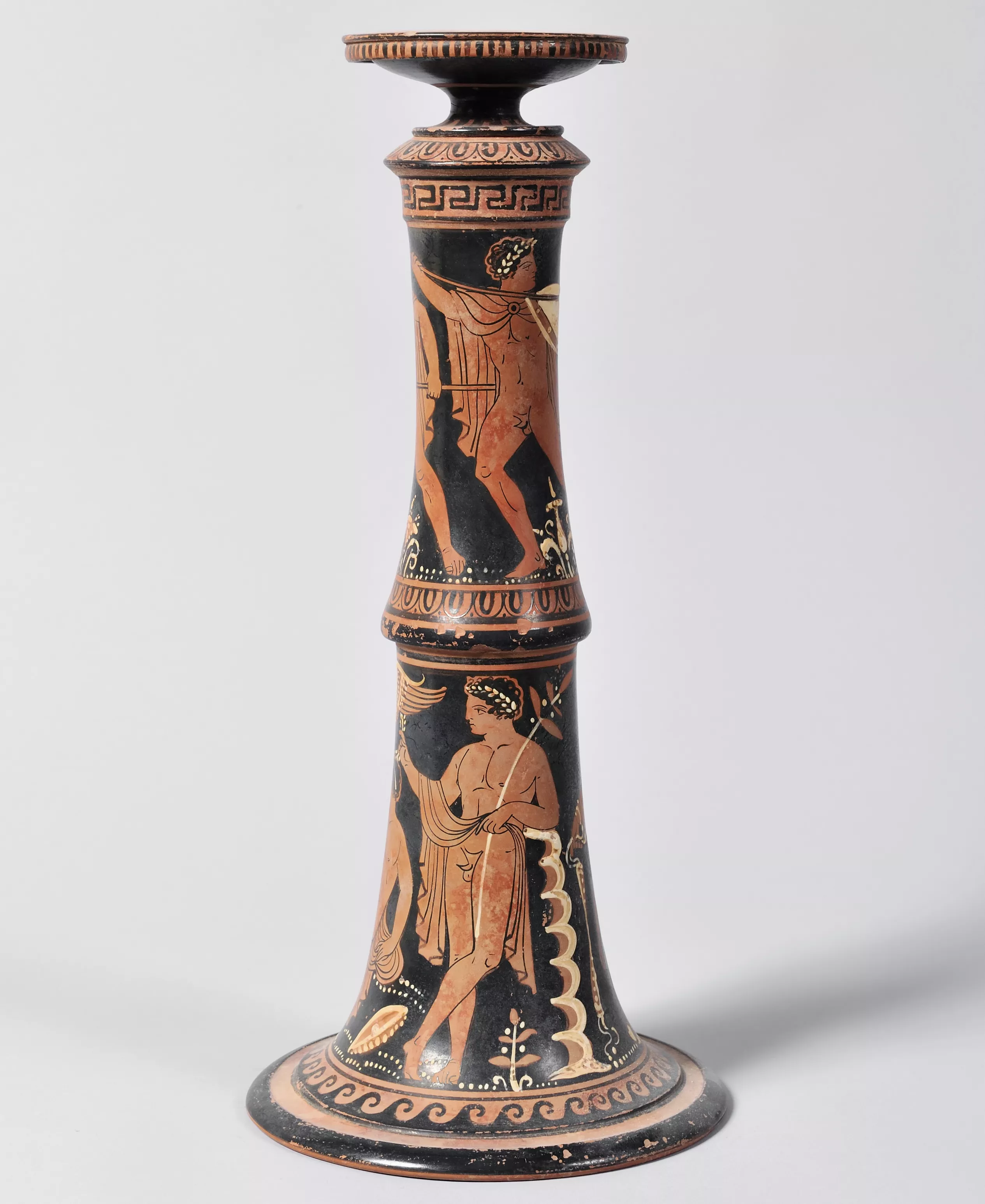
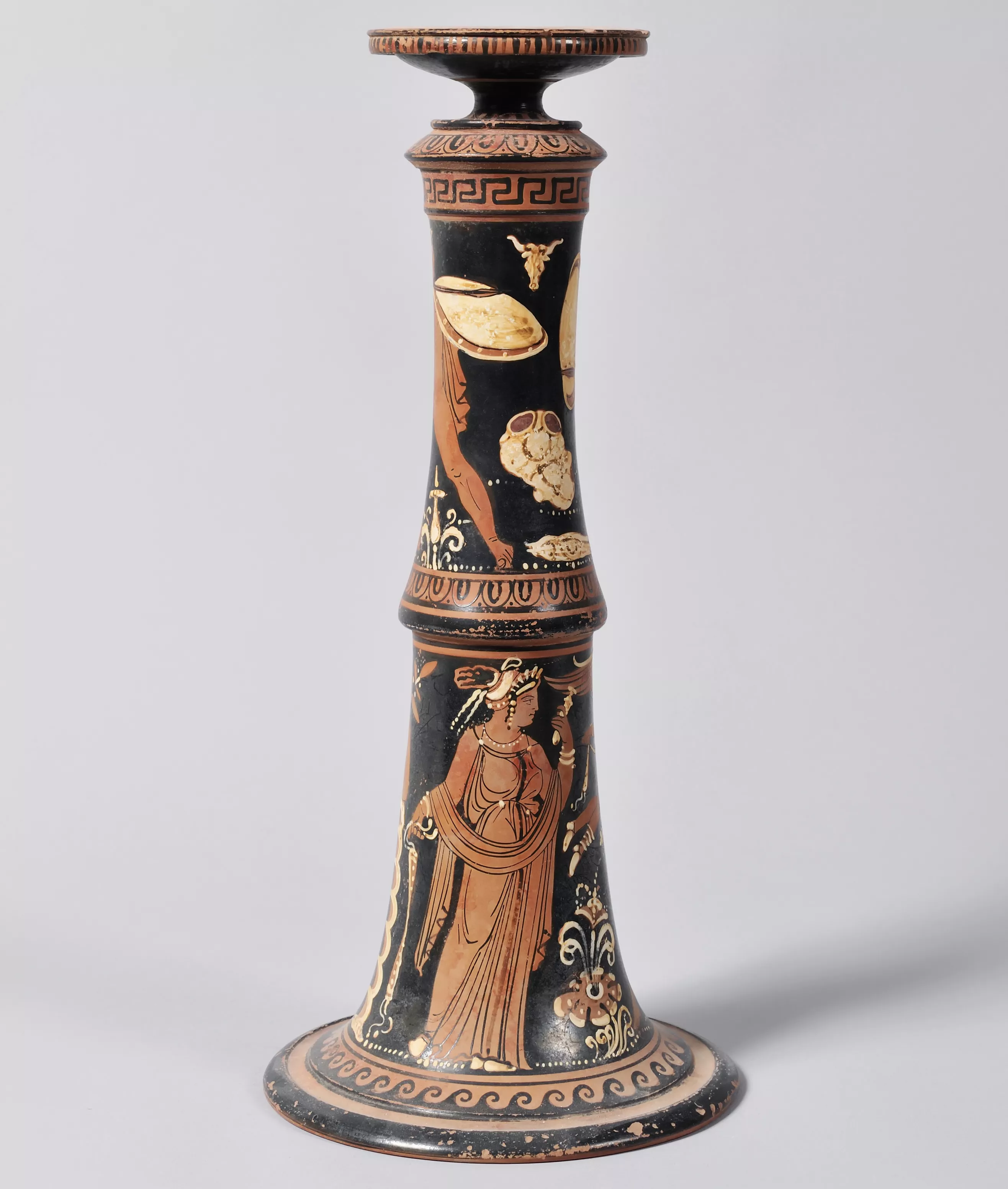
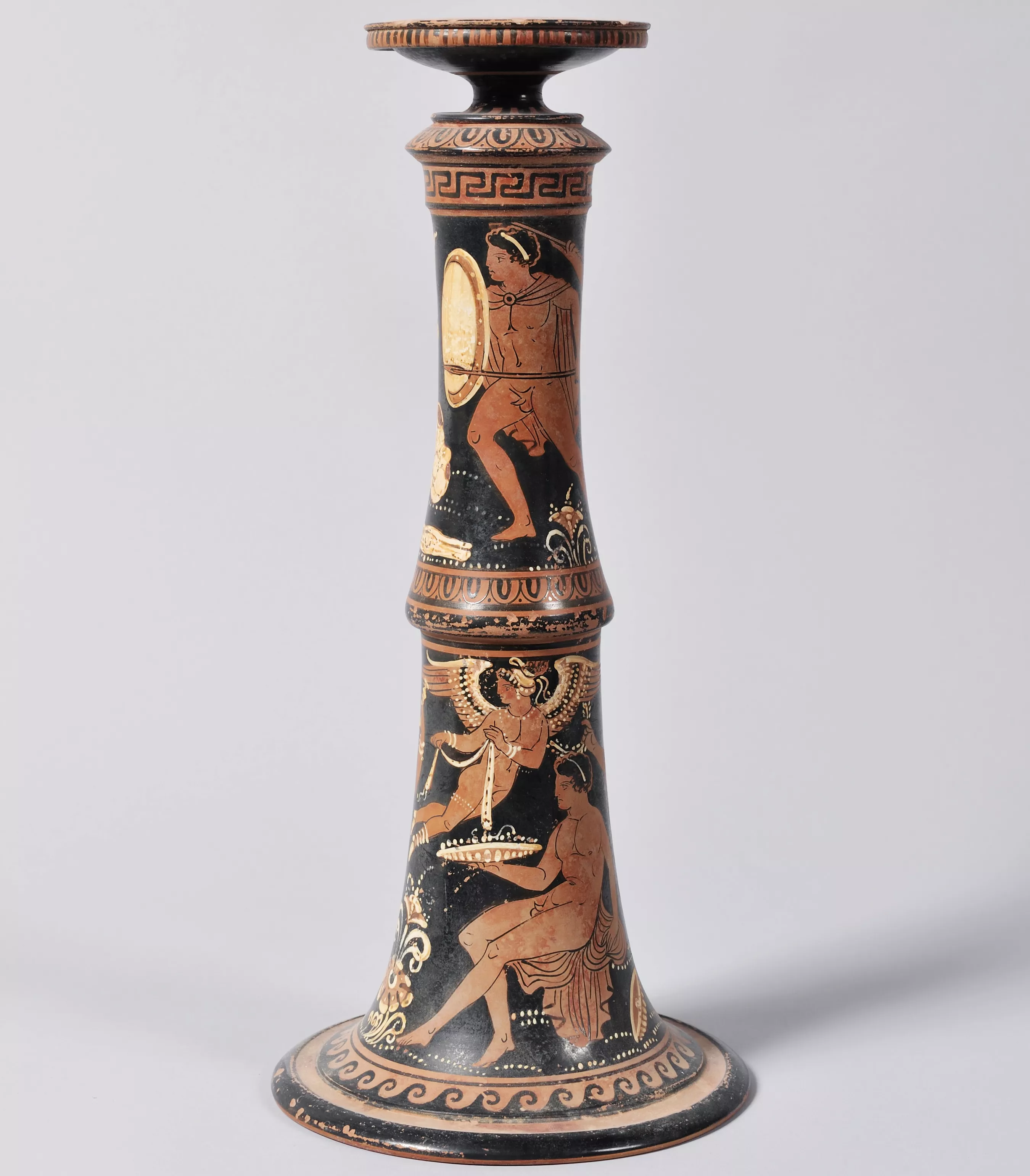



Thymiaterion (brûle-parfum) à figures rouges
Seconde moitié du IVe siècle av. J.-C., vers 320 av. J.-C.
A - Registre supérieur : un jeune guerrier en armes. B -Registre inférieur: scène cultuelle. Au-dessus du jeune défunt assis, Eros ou génie funéraire.
Présentation de l'œuvre
Région
Italie du sud (Apulie)
Date
Seconde moitié du IVe siècle av. J.-C., vers 320 av. J.-C.
Données spécifiques
Musée d'accueil
Musée Lapidaire
Provenance
Achat de L'institut Calvet en 2009
À découvrir aussi

Hydrie à figures rouges
Vers 440 av. J.-C. Atelier de Polygnatos
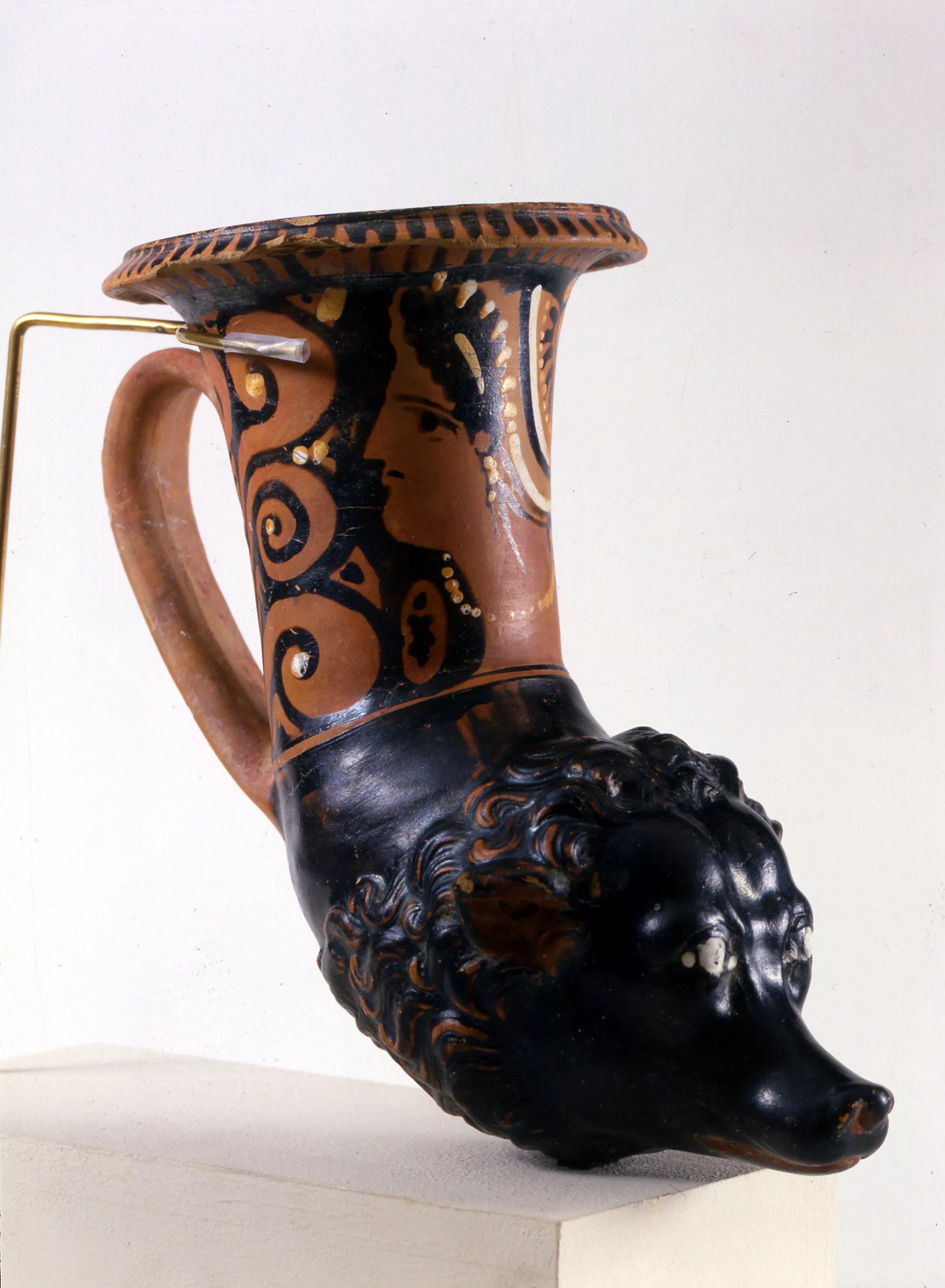
Rhyton à figures rouges
Groupe de Copenhague, deuxième moitié du IVe siècle av. J.C.
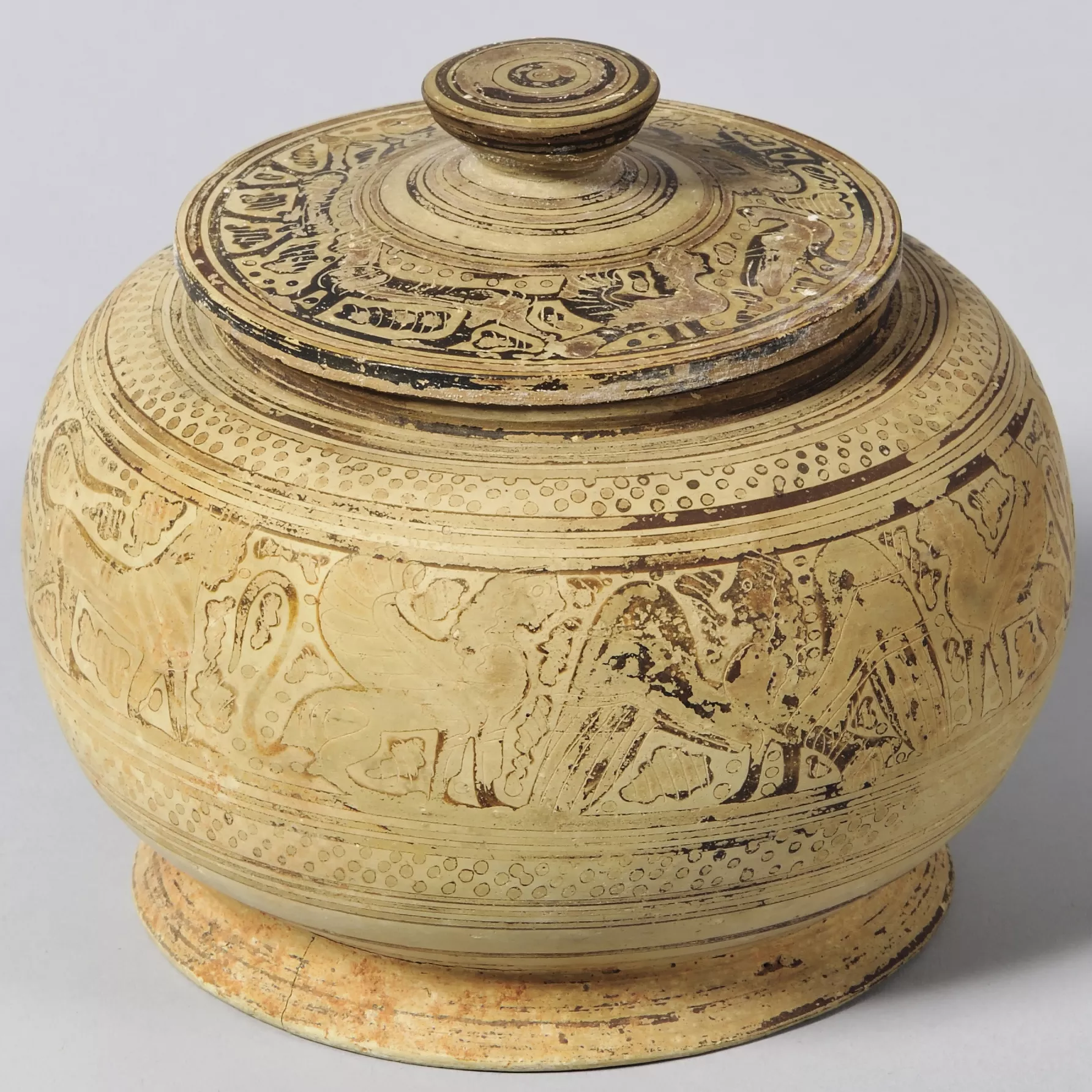
Pyxide (boite à onguents) à paroi convexes
Style orientalisant, Corinthien moyen, Premier quart du VIe siècle av. J.-C.
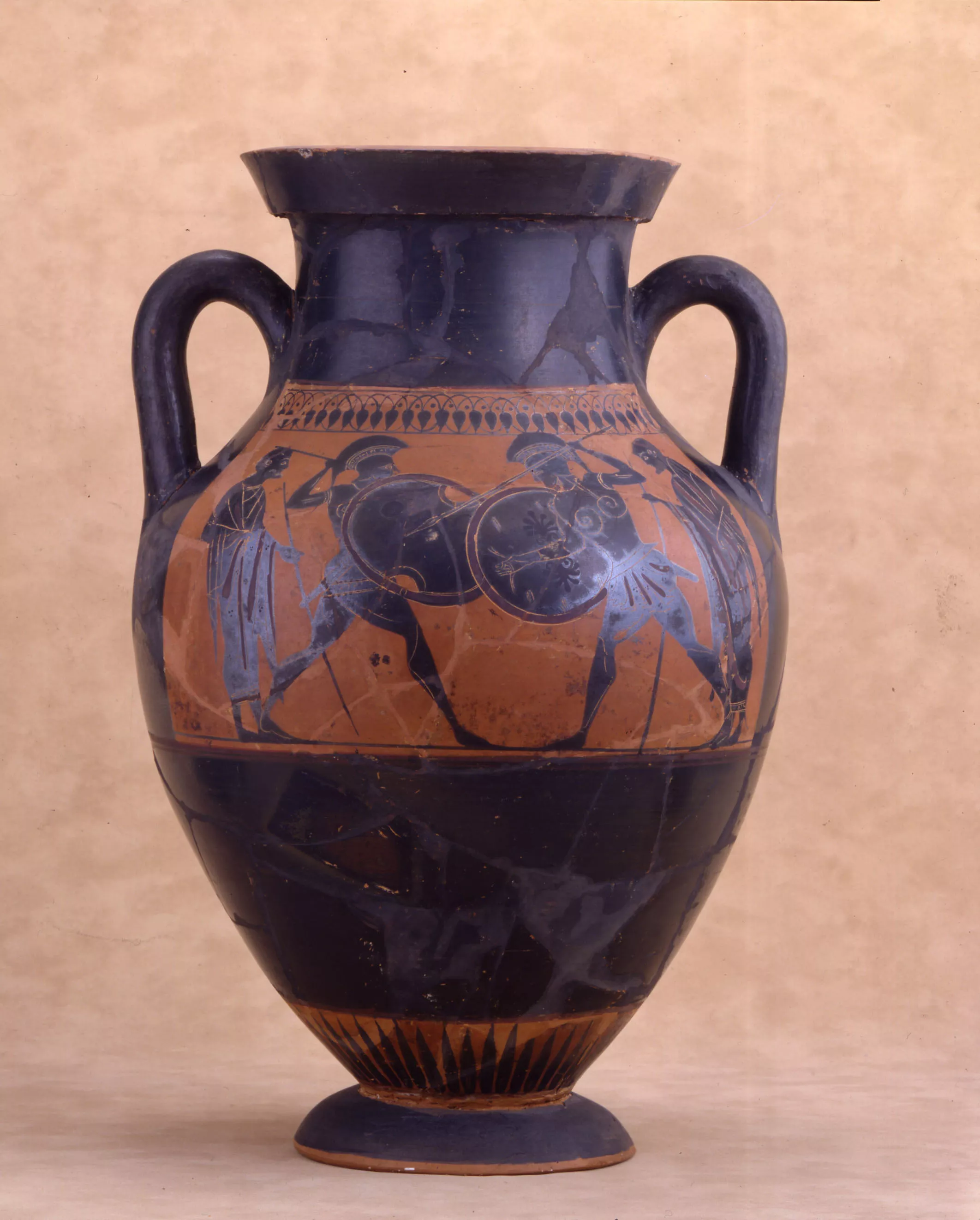
Amphore à figures noires
Vers 525 av. J.-C.